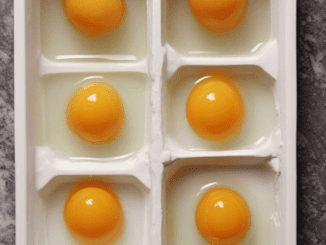In a world of endless visual stimuli, there’s one optical illusion that has recently captured the attention of the internet – the challenge to spot the hidden letter ‘M’ cleverly concealed among a sea of ‘N’s. This mind-bending puzzle has left countless people scratching their heads, questioning the very nature of their perception.

The image at the center of this optical illusion phenomenon is a simple one – rows upon rows of the letter ‘N’ neatly stacked together under a caption asking viewers to locate the hidden ‘M.’ At first glance, the task may seem easy, but as countless internet users have discovered, the letter ‘M’ is masterfully camouflaged within the pattern, making it almost indistinguishable.
This optical illusion is no accident; it has been meticulously designed to deceive the viewer. The letters ‘M’ and ‘N’ share a similar shape, with both consisting of vertical lines and diagonal strokes. However, the extra diagonal line in the ‘M’ is what sets it apart. But when surrounded by ‘N’s, this subtle difference becomes increasingly difficult to discern.
The illusion plays on the subtle differences between ‘M’ and ‘N,’ challenging our visual perception and forcing our brains to work overtime to distinguish between the two. The white background and bold typography used in the image further enhance the difficulty, making the ‘M’s blend seamlessly into the pattern of ‘N’s.
Since its release on the Twitter page “Non-aesthetic Things,” this optical illusion has taken the internet by storm, garnering over 27 million views and sparking endless debate and discussion among viewers. Users have flooded the comment sections with their guesses and interpretations, eager to share their findings and be the first to solve the puzzle.
As viewers shared their attempts to locate the hidden ‘M’s, some confidently stated their answers, only to be surprised by the correct count. The actual solution? There are a total of 10 hidden ‘M’s – 2 in the question itself and 8 within the rows of ‘N’s below.
Optical illusions like this one serve as a fascinating glimpse into the workings of our brains. They reveal how easily our minds can be deceived by visual cues and how our perception of reality is often different from the actual truth. The challenge of spotting the hidden ‘M’s demonstrates the power of focused attention and the importance of taking a closer look at what we see.
— non aesthetic things (@PicturesFoIder) July 31, 2023
Optical illusions are more than just fun puzzles; they offer valuable insights into the way our brains process visual information. By understanding how these illusions work, we can gain a deeper appreciation for the complexities of human perception and the limitations of our senses.
Whether you were able to find all 10 hidden ‘M’s or only a few, the challenge of this optical illusion is a testament to the power of focused attention and the importance of keeping our minds sharp. By engaging with these visual puzzles, we can enhance our ability to perceive subtle differences and train our brains to be more agile in processing information.
The next time you come across an optical illusion, embrace the opportunity to engage with it. These visual puzzles are not only immensely entertaining but also offer a fascinating glimpse into the inner workings of our minds. Whether you’re stumped or able to solve the illusion with ease, the journey of discovery is what makes these experiences so captivating and rewarding.
The hidden ‘M’ optical illusion that has taken the internet by storm is a testament to the power of visual perception and the remarkable way our brains process information. By challenging our assumptions and pushing the boundaries of what we think we see, these illusions offer a window into the complexities of human cognition. As we continue to explore and unravel the mysteries of optical illusions, we gain a deeper appreciation for the incredible capabilities and limitations of our senses. So, the next time you come across a mind-bending visual puzzle, embrace the opportunity to engage with it and unlock the secrets of your own perception.


